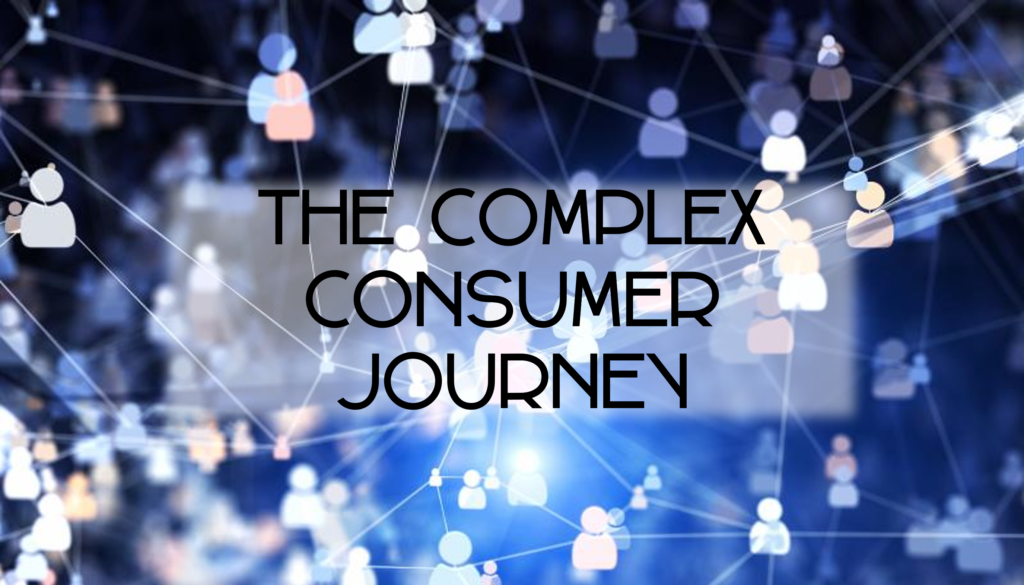Time and again pundits have insisted that some changes in consumer behavior brought about by the pandemic are likely to last. One of the behaviors to which they often point is an increase in online purchases. Even before the pandemic, consumers were trending towards more online shopping — making the digital path to purchase and omnichannel operations important for manufacturers and retailers. So it was a pretty safe bet that this trend would continue. What seemed to surprise experts was how quickly and eagerly consumers returned to in-person shopping experiences once they perceived the threat of catching COVID-19 had diminished.
Perhaps it shouldn’t have come as much of a surprise. Simon N. Young, a former professor in the Department of Psychiatry at McGill University, has observed, “Humans are inherently social.”[1] He adds, “Different animals, including humans, share many of the same types of social behavior such as affiliation and aggression, the establishment of hierarchy and territoriality. This can be the case even in species, such as ants, with a primitive brain. Although we may share some of the broader aspects of our social behavior with more primitive species, human social behavior is obviously more complex but no less important for our health and survival.” In other words, getting together with others and sharing social experiences, like shopping, is important for both our physical and mental health. This compulsion to be social is reflected in changing consumer purchase patterns. Whereas consumers were buying cleaning supplies and shelf-stable products at the beginning of the pandemic, they started buying cosmetics and clothing once they felt it safe to get back out into the world.
The omnichannel approach
Recognizing that consumers are social beings (and aren’t likely to abandon instore shopping altogether), brands need to recognize that taking an omnichannel approach to marketing is essential. Marketing expert Chris Hoelsen explains, “[An omnichannel approach] is when a business advertises to, and communicates with, customers across multiple channels, treating each interaction or touchpoint (e.g., social media, WhatsApp, SMS, websites etc.) as part of a single, frictionless whole. This approach enables customers to begin their experience with a brand in one channel and continue it on another channel seamlessly.”[2] The “channel” he misses is the in-person, in-store channel. The importance of this channel can be seen in the popularity of “buy online, pick-up in-store” (BOPIS) option frequently used by consumers. Hoelsen notes, “[The omnichannel approach] has been shown to positively impact the quality of customer interactions, increase customer engagement, improve customer retention and generate more revenue (according to a recent ClickZ study — shoppers who use three or more channels to interact with brands have a purchasing frequency rate 250% higher than single-channel users).”
It should be obvious that a consumer who interacts with retailers using three or more channels is making the purchasing journey much more complex than in the past. Annie Little, Strategy Director at Initials, writes, “The stakes have never been higher. Brands need to get a firm grip on how the consumer journey has evolved and update traditional linear purchase funnels from their marketing agenda as a strategic priority.”[3] She adds, “Creating a high-converting omnichannel purchase journey can’t be a checkbox exercise. A more holistic and strategic approach is required, spanning the entire consumer journey and incorporating reciprocal actions at every experience encounter. This requires, first, an understanding of how the consumer journey has evolved; and, second, insight into how consumers are navigating their way through it.”
Little describes the bulk of the new digital path to purchase as the “messy middle,” a term coined by Google. She notes, “[The messy middle] is a space of abundant choice and unlimited content. Here, consumers explore and evaluate product information, research brands, and weigh up their options. This is happening across an ever-expanding digital ecosystem, from online channels to social media to search engines, aggregators, review website and much more. This exposure is not a stage or step in the buying process, but an ‘always-on’ experience. Consumers will traverse the loop between exploration and evaluation many times before making a purchasing decision.” She then asks the essential question: “How can brands show up at the right moment and win consumer preference?”
Winning the consumer
Little observes that consumers must deal with information overload during their purchasing journey. In order to cope, she says, they rely on cognitive biases (i.e., “the brain’s attempt to simplify information processing”). She insists, “These cognitive biases shape shopping behavior and influence why we choose one product over another.” To help brands understand which cognitive biases are motivating consumers to make purchasing decisions, Little suggests they turn to cognitive technologies (aka artificial intelligence). Her company uses a solution called the Consumer Journey Hacker. My company’s solution is called the Enterra Shopper Marketing and Consumer Insights Intelligence System™. These and other AI systems share much in common. As Little notes, they are data-driven and based on behavioral science. Using such systems, she writes, can help “brands plan for the right stimuli that will impact buyers in key moments.”
According to Little, “Understanding behavioral biases does more than just increase advertising effectiveness; it can encourage a deeper psychological understanding of consumers and their cultural norms and nuances. It can inspire new business strategies and products. These behavioral science principles (and the behavioral and informational needs they align with) are powerful tools for winning and defending consumer preference in the new complex consumer journey.”
Concluding Thoughts
If you still have to be convinced of the importance of an omnichannel approach, perhaps a survey conducted by the Path to Purchase Institute will do the trick. Tim Binder (@P2PI_TBinder), editor of the Institute’s magazine, reports that when survey participants were presented “with a list of 13 strategies or tactics and asked them to choose up to three that have been the most important to them. … Exactly half answered either e-commerce generally or e-commerce content — the most for any option. Next, slightly more than a third of respondents chose digital media tactics (other than retail media and social media), with retailer media networks and social media finishing close behind in third and fourth place, respectively.”[4] When it came to the in-person, in-store channel, 72% of survey participants indicated “they leverage in-store/physical experiences in some way.” When asked what they did to enhance in-store experiences, they named the following types of activities: “hosting or having a presence at local events; sponsoring larger events such as concerts, festivals and sports; leveraging brand or pop-up stores; executing demonstrations inside and outside stores; and retailtainment.”
Karleitia Bodlovic and Minsun Collier, executives at Blink Consulting, insist, “Brands must consistently communicate across all channels directly to consumers and deliver products or services whenever and wherever they are.”[5] They add, “The challenge is that currently most retailers/brands aren’t omnichannel. They’re multi-channel at best, meaning comms that each customer experiences are fragmented or disconnected between channels. … In an omnichannel ecosystem, the message must be adapted to each channel, so that the experience is built for the user — wherever the consumer is experiencing the brand or retailer. Brands that merge their traditional ecommerce strategy with new consumer behaviors will not only maintain relevancy with their loyalist users but will expand their reach to new consumers that expect products to find them.”
Footnotes
[1] Simon N. Young, “The neurobiology of human social behaviour: an important but neglected topic,” National Library of Medicine (Canada), September 2008.
[2] Chris Hoelsen, “The omnichannel customer experience: integrated and in real time,” The Media Online, 30 May 2022.
[3] Annie Little, “The messy middle and infinite choice: hacking the complex new consumer journey,” The Drum, 30 May 2022.
[4] Tim Binder, “Trends 2022: Adapting to Abnormal Times,” Path to Purchase IQ Magazine, 1 February 2022.
[5] Karleitia Bodlovic and Minsun Collier, “Supercharging the path to purchase,” AdNews, December 2021.





